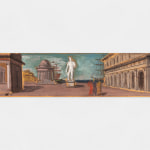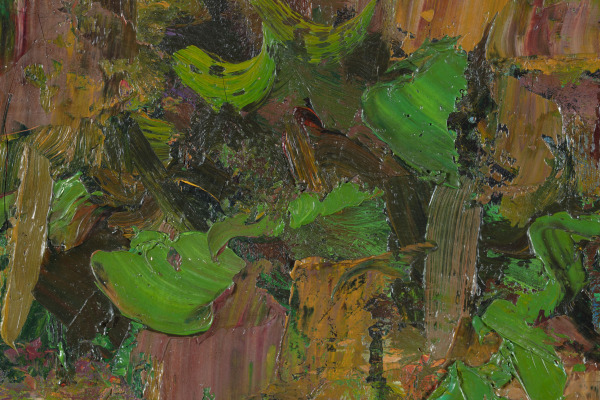-
Biography
Achille Virgilio Socrate Funi (Ferrara, Italy 1890 - Appiano Gentile, Italy 1972)
Born in Ferrara in 1890, Virgilio Funi (he acquired the name Achille just before 1920), he grew up deeply admiring the frescoes in the Schifanoia Palace, following his passion by attending the Dosso Dossi School of Fine Arts in Ferrara.
In 1906, he moved to Milan with his family, where he studied at the Brera Fine Arts Academy and formed friendships with the artists who would later create Futurism.
With the display of his works at the New Tendencies exhibition in 1914, he openly declared his artistic distance from the movement, preferring a less disruptive and more realistic art. In the same year he volunteered for the war.
When he returned to Milan, the artistic and social scenario of the city had changed: in 1919, Funi joined the famous meeting in Piazza San Sepolcro in Milan, which gave birth to fascism and exhibited at the Great Futurist Exhibition of the Cova Palace.
In the 1920s, he frequented Margherita Sarfatti’s salon, where he met, among others, Mussolini, Sironi and Arturo Martini. With Martini, he spent nine months on Lake Como, guests of the patron, Preda. This was a fundamental period for the development of a new pictorial language focused on the solidity of forms and an essential composition, of direct Renaissance derivation.
From here, Funi began an intense personal journey to recover classical models, with a particular interest in the human figure, which became the ideal fulcrum and main subject of his artwork, together with an attention to crafts.
In 1922, he founded the 900 group together with Anselmo Bucci, Mario Sironi and other artists. They made their national debut in 1924 at the Venice Biennale.
Funi was part of the steering committee until 1930, when the group began to disintegrate, affected by the first cracks in their association with fascism, now consolidated and in power.
Facing the need for an art capable of embodying the ideals of the fascist state, Sironi brought an answer with mural painting, a trend which Funi followed to create a series of important commissions between Rome, Ferrara and Tripoli.
In 1939, he began teaching at the Brera Fine Arts Academy and, in 1944, he took over the direction of the Institute. He joined the teaching staff in 1448 and, in 1961, returned to a management role. He also taught at the Carrara Academy in Bergamo, where he created a school dedicated to frescoes.
He died in Appiano Gentile in 1972.
Copyright the artist. Photo UniCredit Group (Sebastiano Pellion di Persano)
-
Works
Achille Virgilio Socrate Funi Italian, 1890-1972
Visione di una città ideale Figure in uno sfondo architettonico con scultura, 1951Tempera on paper applied on panel / Tempera su carta applicata su tavola / Tempera auf Papier, auf Holz aufgetragen8 1/4 x 39 in
21 x 99 cmUniCredit S.p.A.© Achille FuniPhoto: UniCredit Group (Sebastiano Pellion di Persano)
Join our mailing list
* denotes required fields
In order to respond to your enquiry, we will process the personal data you have supplied in accordance with our privacy policy.









